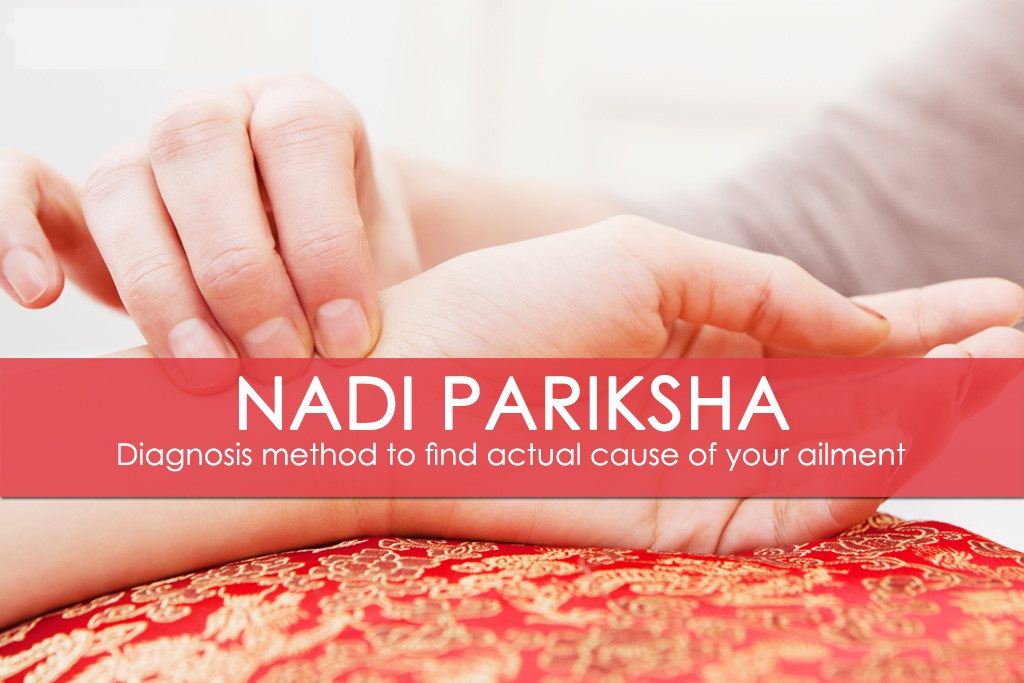
Basic Information About Nadi Pariksha
To understand the concepts of nadipariksha, we should first understand the concept of strotas, siras, dhamani and nadi. We generally relate all these as the channels of the body which are assigned a job of carrying substances within the body. It is well admired fact that Maharishi Sushurut manage to trace even minute-minute channels present in the body even when they were very difficult to be traced with naked eyes. He was able to recognize the ever pore in it. It was calculated that there were about 700 siras, two hundreds dhamanees, which could be easily enumerated but when the minute siras and dhamanees were counted with there tributaries and branches, there number was estimated to be the same as the number of hair follicles which was distributed thoughout the body. Approximately their number was calculated at two lakh ninety thousand five hundred and fifty six.
- The study of nadi however was specialized technique which was perfected by yogis. They classified the big nerves as two and the smaller branches as seventy two thousand. A yoga text mentions fourteen nadis with there functions which are as follows.
Susuhmana This nadi runs up in spine till the brahmarandra.
Pingla This nadi runs upon the right of sushmna and ends in right nostril
Ida It runs upon the left sushmna and ends in the left nostril
Hastijiva It runs down in the left and ends in the big toe.
Yasasvini The trunk in the leg ends in the right big toe.
Kuhu The nadi that has its sphere of influence terminating in the vagina
Alambusha It terminates at the end of the anus
Gandhara It ends in the left eye.
Pusha It ends in the right eye.
Sankhini It terminates in the left ear.
Payavaini It terminates in the right ear
Sarasvati It terminates in the tongue
Viswodara It terminates in the face
Varuna It has its influence spreading through out the body.
Except these 14 nadis there is also mentioning of five afferent sensory nerves which carry impulse from the periphery to the centre. These are Sabda (hearing) Sparsha(touching) Roop (vision) Rasa (taste) Gandh (smell)
There is also mention of five efferent or motor nerves, which start from the centre and discharge impulses at the periphery. These are Vak (speech) Pani (reception by hand) Pada (locomotion by legs) Payu (excretion) Upastha (procreation)
It is very important to understand the full implication of nadi parksha. It is not just to study the venous pulsation in the wrist. Nadi science is the sceience of the nadi or nerves, which includes the study fo life processes that are responsible for living and existence of man. Nadi is said to be jiva sakshi, the evidence of life.
Nadi gets influenced by various affects that influence the physiology of the body , especially the three doshas. i.e. Vata, Pitta and Kapha. The dhamani or the nadi mentioned here simply refers to radial artery. Its gati-motion does not merely indicate the rate or the rhythm of the pulse, the size and condition of the arterial wall or the volume of blood that flows through the artery or the force with which the blood flows. The gati or the motion of this nadi also indicates the imbalance of the three doshas ie. vata,pitta and kapha
The nadi investigation is chiefly performed to ascertain the imbalance of dosha or doshas. The extent of derangement can also be known by this methodology. The pulse is recogniszed to be jiva sakshi. The prognosis of a physician at very critical moments when death is threatening, depends upon his accurate study of pulse and all the capacity of the physician should then be at his command. The knowledge of pulse investigation embraces in itself a vast science. It is partly based on the physical examination of the artery on the concentration of the mind that the physician can bring to bear at the moment of examination. It is not the counting of the pulse rate, The whole concept of examining the pulse is still faraway the reach of modern system. To be expert in nadi pariksha one should have a good yogic powers like concentration of mind and bringing our mind nearer to the sould to acheve a ideal condition etc. hence to achieve a infinite forces which modern science has yet to explore.
|| NAKSHATRA AYURVEDAM || OFFER THE BEST OF NAADI DIAGNOSIS
Vd. dattatray pandya is a master of NAADI PARIKSH (PULSE DIAGNOSIS).
He diagnoses the diseases & constitution of all the patients by NAADI PARIKSHA since last 9 years.
He is an extraordinary NAADI VAIDHY (the ayurveda doctor who diagnoses with NAADI)
Who learns this science under the guideline of many traditional ayurveda NAADI GURU.
He spent his 6 years to learn that great science.
Now he becomes a very popular NAADI VAIDHY in India & to satisfy that popularity he meets more than 100 patients everyday in different cities of india.
Vd. Shefali pandya is also doing the same work in the field of ‘female health’ & ‘garbh sanskar’ with the help of NAADI PARIKSHA.